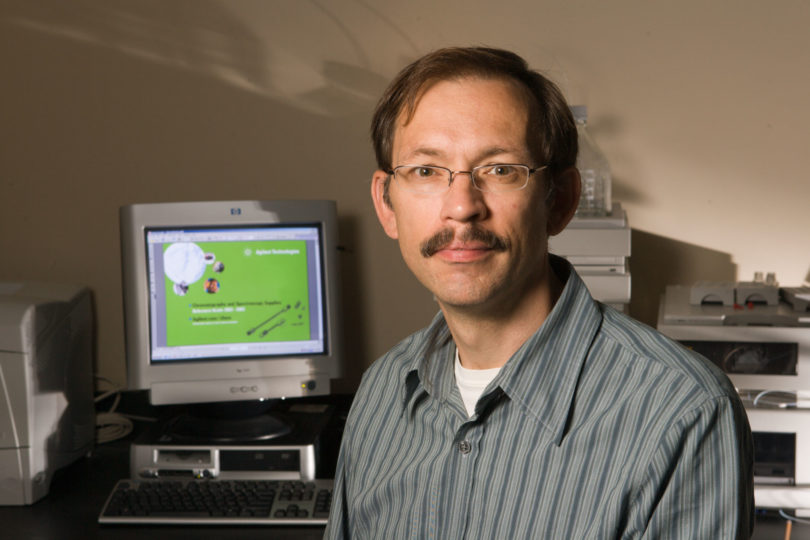Researchers from UGA and the Mayo Clinic in Arizona have developed a vaccine that dramatically reduces tumors in a mouse model that mimics 90 percent of human breast and pancreatic cancer cases—including those resistant to common treatments.
The vaccine, described in the early edition of the journal Proceedings of the National Academy of Sciences, reveals a promising new strategy for treating cancers that share the same distinct carbohydrate signature, including ovarian and colorectal cancers.
“This vaccine elicits a very strong immune response,” said study co-senior author Geert-Jan Boons, Franklin Professor of Chemistry and a researcher in the UGA Cancer Center and its Complex Carbohydrate Research Center. “It activates all three components of the immune system to reduce tumor size by an average of 80 percent.”
The researchers used unique mice developed by Sandra Gendler, Grohne Professor of Therapeutics for Cancer Research at the Mayo Clinic and co-senior author on the study. Like humans, the mice develop tumors that overexpress a protein known as MUC1 on the surface of their cells. The tumor-associated MUC1 protein is adorned with a distinctive, shorter set of carbohydrates that set it apart from healthy cells.
Gendler explained that when cancer occurs, the architecture of the cell changes and MUC1 is produced at high levels, promoting tumor formation. A vaccine directed against MUC1 has tremendous potential, Gendler said, as a preventative for recurrence or as a prophylactic in patients at high risk for particular cancers. A vaccine also can be used together with standard therapy such as chemotherapy in cancers that cannot be cured by surgery, such as pancreatic cancer.
Boons noted that MUC1 also is overexpressed in 90 percent of the subset of patients who are not responsive to hormonal therapy, such as Tamoxifen or aromatase inhibitors, or the drug Herceptin. These so-called “triple-negative” tumors are extremely aggressive and difficult to treat, Boons said, and a new treatment option is urgently needed.
“In the U.S. alone, there are 35,000 patients diagnosed every year whose tumors are triple-negative,” Boons said. “So we might have a therapy for a large group of patients for which there is currently no drug therapy aside from chemotherapy.”
Therapeutic vaccines received renewed attention last year when the U.S. Food and Drug Administration approved the first cancer treatment vaccine, a drug known as Provenge that is used to treat metastatic prostate cancer. Treatment with Provenge, which is manufactured in Georgia, requires clinicians to isolate immune cells from the patient and then to send the cells to a lab, where they are linked to a protein that stimulates the immune system. The cells are returned to the patient’s treating physician, who then infuses the drug over three treatments, usually two weeks apart.
Boons’ vaccine, on the other hand, is much simpler. It is fully synthetic, meaning that its components can be manufactured in a lab with assembly-line precision. The vaccine consists of three components—an immune system booster known as an adjuvant, a component that triggers the production of the immune system’s T-helper cells, and a carbohydrate—linked peptide molecule that directs the immune response to cells bearing MUC1 proteins with truncated carbohydrates.
Boons, Gendler and their colleagues are currently testing the vaccine’s effectiveness against human cancer cells in culture and are planning to assess its toxicity. If all goes well, they anticipate that phase I clinical trials to test the safety of the vaccine could begin by late 2013.








